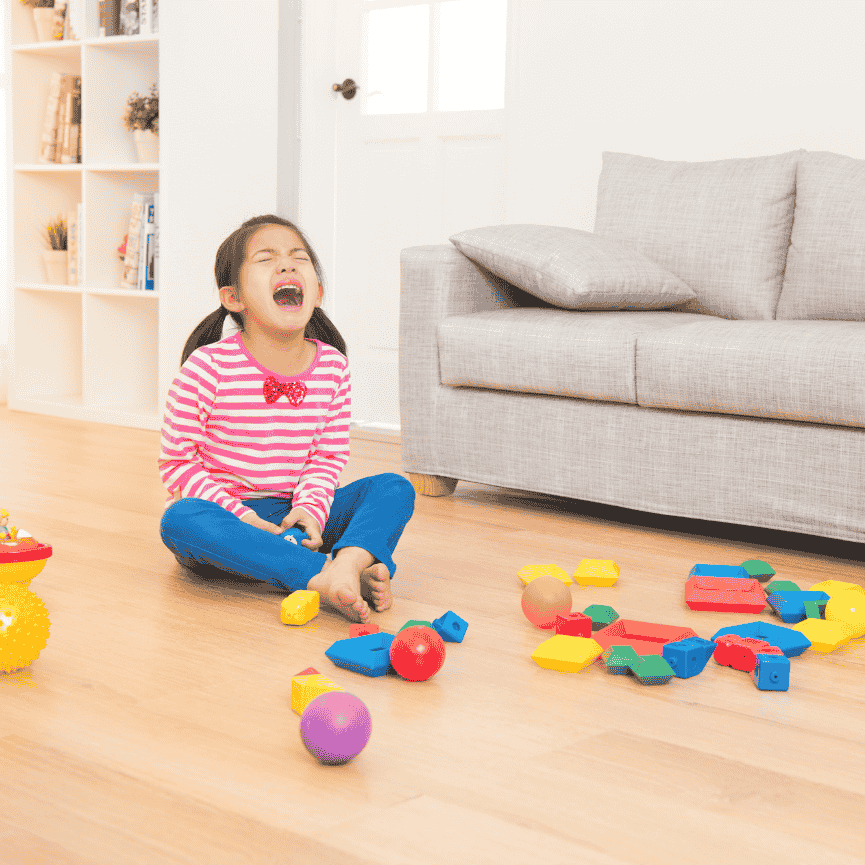
- Feb 04, 2025
- 147 Views
- 0 Comments
Gentle Techniques To Calm Your Child's Meltdowns Fast
Managing Meltdowns with Compassion: Techniques for Calming Your Child During Overwhelming Moments
Parenting is an incredible journey filled with joys and challenges. Among the most difficult moments are when your child experiences a meltdown. These overwhelming moments can leave both you and your child feeling stressed, frustrated, and helpless. However, with the right techniques and a compassionate approach, you can manage these meltdowns effectively and help your child navigate through their emotions.
What is a Meltdown?
Defining a Meltdown
A meltdown is an intense emotional and physical reaction that often occurs when a child is overwhelmed by their environment or emotions. Unlike tantrums, which are usually goal-oriented behaviors, meltdowns are not about getting something but rather a response to feeling completely out of control.
Meltdowns vs. Tantrums: Understanding the Difference
It’s essential to distinguish between a meltdown and a tantrum. A tantrum typically involves a child trying to assert their will, often in response to a denied request. On the other hand, a meltdown is a sign that your child is unable to cope with the current situation, and it’s beyond their control.
Common Triggers for Meltdowns
Common triggers for meltdowns include sensory overload, changes in routine, fatigue, hunger, and emotional distress. Understanding these triggers is key to preventing meltdowns or managing them more effectively when they do occur.
The Science Behind Meltdowns
Neurological Responses During a Meltdown
During a meltdown, the brain’s fight-or-flight response is activated. This means that your child’s body is flooded with stress hormones, making it difficult for them to think clearly or respond to reasoning.
The Role of Sensory Overload
Sensory overload occurs when the brain receives more input from the environment than it can process. This can include loud noises, bright lights, or even uncomfortable clothing. For children sensitive to sensory input, this overload can quickly lead to a meltdown.
Emotional Dysregulation in Children
Emotional dysregulation refers to the inability to manage emotional responses in a way that is socially acceptable or effective. Children who struggle with emotional regulation may experience more frequent meltdowns as they have a harder time processing and responding to their feelings.
Signs Your Child is About to Have a Meltdown
Early Warning Signs
Recognizing the early signs of a meltdown can help you intervene before it escalates. These signs may include restlessness, irritability, or withdrawal from social interactions.
Physical and Emotional Indicators
Physical indicators such as clenching fists, tensed muscles, or rapid breathing can signal that a meltdown is imminent. Emotionally, your child may appear distressed, anxious, or overly sensitive.
Behavioral Patterns to Watch For
Pay attention to repetitive behaviors, such as pacing or rocking, which can indicate that your child is struggling to maintain control. These patterns are often a precursor to a meltdown.
Compassionate Techniques for Managing Meltdowns
Staying Calm as a Parent
Your reaction to your child’s meltdown is crucial. Staying calm not only helps you think more clearly but also sets a calming example for your child. Take deep breaths and remind yourself that this moment will pass.
Creating a Safe Environment
During a meltdown, it’s important to create a safe space for your child. This might mean moving them to a quieter area or removing any potential hazards. A safe environment can help reduce sensory input and allow your child to regain control.
Using Soothing Techniques
Soothing techniques such as gentle touch, soft music, or a favorite blanket can help your child feel more secure. These techniques can provide comfort and reduce the intensity of the meltdown.
Effective Communication During a Meltdown
Verbal and Non-Verbal Communication
When your child is in the midst of a meltdown, communication should be simple and clear. Use short, reassuring phrases and a calm tone of voice. Non-verbal communication, such as maintaining a relaxed posture and making gentle eye contact, can also be comforting.
The Power of Empathy
Empathy is one of the most powerful tools you have as a parent. Acknowledge your child’s feelings and let them know that it’s okay to feel upset. By showing empathy, you help your child feel understood, which can be incredibly calming.
Using Simple, Reassuring Language
During a meltdown, your child’s ability to process complex language is limited. Stick to simple, reassuring phrases like “I’m here,” “You’re safe,” and “It’s okay.” These words can provide the reassurance your child needs to start calming down.
Practical Tools and Strategies
Breathing Exercises
Teaching your child simple breathing exercises can be a highly effective way to manage meltdowns. Techniques like “bubble breathing,” where they imagine blowing bubbles with each breath, can help regulate their breathing and reduce anxiety.
Sensory Tools and Toys
Sensory tools, such as stress balls, weighted blankets, or noise-canceling headphones, can help your child manage sensory overload. These tools provide a way to focus their energy and reduce the intensity of the meltdown.
The Role of Routine and Predictability
Children thrive on routine and predictability. Establishing a consistent daily routine can help reduce anxiety and prevent meltdowns. Knowing what to expect can provide a sense of security and control for your child.
Preventing Future Meltdowns
Identifying and Avoiding Triggers
Once you’ve identified the common triggers for your child’s meltdowns, you can work on avoiding them or reducing their impact. For example, if loud noises are a trigger, you might consider using noise-canceling headphones in noisy environments.
Building Emotional Resilience
Building emotional resilience involves teaching your child how to manage their emotions effectively. This can include practicing mindfulness, teaching problem-solving skills, and encouraging positive self-talk.
Teaching Coping Mechanisms
Helping your child develop coping mechanisms is essential for preventing meltdowns. This might include teaching them how to ask for a break when they feel overwhelmed or showing them how to use calming techniques like deep breathing or visualization.
The Role of Professional Help
When to Seek Professional Guidance
If your child’s meltdowns are frequent, severe, or affecting their quality of life, it may be time to seek professional help. A therapist can work with you and your child to develop strategies for managing meltdowns more effectively.
Working with Therapists
Therapists, particularly those who specialize in child psychology or occupational therapy, can provide valuable insights and tools for managing meltdowns. They can also help you create a tailored plan that addresses your child’s unique needs.
Developing an Individualized Plan
An individualized plan might include specific strategies for managing triggers, techniques for calming down during a meltdown, and exercises to build emotional resilience. This plan can be a valuable resource for both you and your child.
Managing meltdowns with compassion requires patience, understanding, and the right techniques. By staying calm, creating a safe environment, and using soothing methods, you can help your child navigate through their overwhelming moments. Remember that each child is unique, and what works for one child might not work for another. The key is to approach each meltdown with empathy and to continue learning and adapting your strategies.



Comments - 0 comments till now